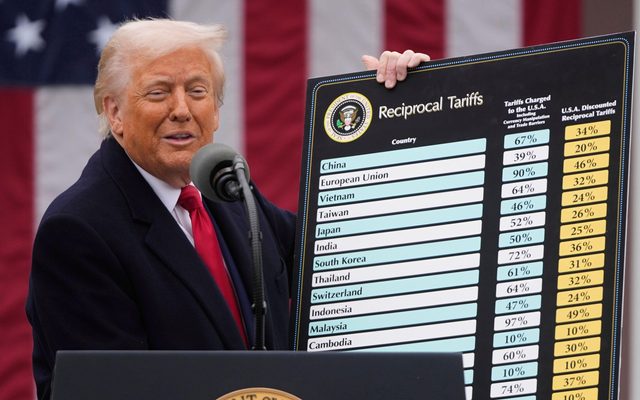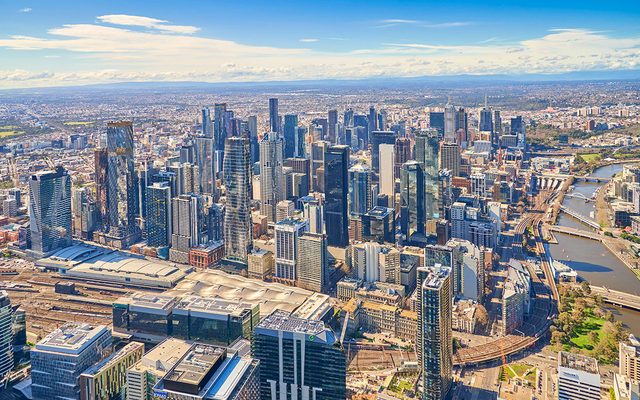This article is from the Australian Property Journal archive
WHILE the world waits to grapple with the potential implications from a Donald Trump presidency, Australia’s two-speed economy is forecast to remain in place for some time, according to BIS Shrapnel’s Economic Outlook.
BIS Shrapnel senior economist and report author, Richard Robinson, said New South Wales is poised to take over the number one spot from Victoria in terms of economic performance over the next two years.
He said there is still more pain to come for the previously-strong mining states of Western Australia, Queensland and the Northern Territory.
“This is a major reversal in interstate relativities from just four years ago. For most of the decade to 2012, the mining investment boom saw Western Australia, Queensland and, more recently, the Northern Territory, record by far the strongest economic growth.
“Now, with the resources investment boom well into a substantial decline – and with more to come – they have been overtaken by NSW and Victoria. The pendulum is swinging away from the mining boom regions and states, and towards the states now being boosted by the lower dollar and their non-mining tradeables and services sectors,”
Victoria’s growth is tipped to slow down owing chiefly to a decline in residential investment due to oversupply, despite continued strong population growth, and private non-dwelling building and infrastructure investment levels slip.
The car manufacturing shutdown late next year will provide more drag on the economy, and the closure of Hazelwood power station and potential shutdown of the Portland aluminium smelter will further dent the manufacturing sector through higher energy prices.
These will also be partially offset by Melbourne’s attractiveness as a business destination and the lower dollar, but gross state product (GSP) growth will slow down to below 2% in 2017/18, and state final demand (SFD) slowing to 2.6% this financial year.
New South Wales will take Victoria’s place at the top of the economic tree on the back of a number of factors, with SFD growth to be sustained this financial year at 3.7% before a dip to 2.7%, and GSP growth will remain well above national growth over the next two years, at 3.3% this year and 2.9% in 2017/18.
Dwelling construction in the state still has “strong” growth for at least another year before the state joins the housing downturn and major government infrastructure projects, such as the Sydney Metro Rail development, are now underway.
Non-mining business has started to recover, with private non-dwelling construction and private engineering construction ramping up for growth over the next two-to-three years, and giving equipment investment, and software and research and development spending a head start in the state.
The worst of the mining slump in Queensland looks to be over, and government spending and dwelling construction are primed to step in as drivers of the state’s economy.
Robinson said public investment is forecast to bounce back over the next two years, led by education-related and other social and institutional buildings, roads, harbours, water and telecommunications-related infrastructure.
He said that while Queensland state government finances are in relatively poor shape, revenues have benefitted from the residential property recovery and corresponding increases in stamp duties, and a jump in coal prices and production ramping up on the Gladstone LNG plants will also boost government revenues.
Private dwellings investment is expected to continue its solid growth, although at a slower rate and a pending oversupply will drive a “sharp” downturn in 2017/18. Private non-dwelling building levels will also contract over the next two years, led by hotels and offices due to oversupply.
Slowing population growth, currently down to 1.3%, will add further headwinds.
The outlook is bleaker for the other key mining state in Western Australia, with the sector’s downturn expected run for another three years.
“The government sector is spending more, albeit hindered by dire budget constraints. However, retail spending is weak, residential building falling, office markets oversupplied and hotels heading for oversupply. It feels like a recession. And if you take out resources production, it is a recession,” Robinson said.
Population growth slowdown will continue to dampen demand for housing, and employment has fallen. Mining production is barley carrying GSP and SFD has fallen by 4.6%, and is expected to drop by 8% this financial year.
Northern Territory is in a similar position, following a period of “high volatility”.
“SFD increased 8% in 2014/15, but then plunged 13.5%in 2015/16 as every segment of private construction and investment activity declined, some quite significantly, while public sector equipment also declined,” Robinson said.
“A strong rebound in SFD and GSP is forecast for this year, then another steep decline in 2017/18 is expected as Ichthys’ construction winds down. There are few economic drivers outside of the Ichthys project, although public investment will provide a small boost this year. GSP should stay positive in 2017/18 as LNG and oil production from Ichthys comes onstream and a lower A$ boosts tourism,”
South Australia is set to welcome growth in SFD this financial year of more than 2%, its best outcome since 2009/2010, driven by solid growth in household and government spending.
These will offset falling business sentiment and fall in dwellings investment from 2017/18 in the face of worsening oversupply.
Key growth drivers will continue to be the low Australian dollar, defence projects and public investment. New public investment rebounded by 9% in 2015/16 and is forecast to rise a further 25% over the next two years, led by robust rises in road construction, telecommunications (NBN roll-out) spending, major rail works, a number of projects at the state’s universities, defence facilities and the $140 million Flinders Medical Centre expansion.
However, Robinson said the improvement over 2016/17 will be short-lived.
“The shut-down of Holden in late-2017 will see over 2,600 jobs lost directly at Holden itself, with thousands more jobs likely to go at car component manufacturers affected by the closure of both Holden and Toyota (in Victoria) at the same time. In the year ending May 2016, 5,100 people (on average) were employed in the motor vehicle and parts manufacturing industry in South Australia, equivalent to 0.6 per cent of total state employment and 7.2 per cent of total manufacturing employment in the state,”
In the state’s capital, the growth momentum of last year will be sustained over next two years, and further strong growth anticipated.
“However, the surprise increase in dwelling investment last year and into this year is not sustainable, as a significant housing oversupply is expected to cause steep falls in residential investment from 2017/18. A key driver of growth will be a boom in private non-dwelling construction next two years, led by the Light Rail and electricity projects,” Robinson said.
Australian Property Journal




